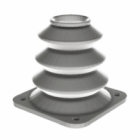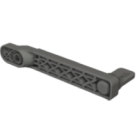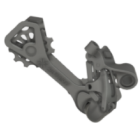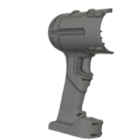3D printing simulation software
In the world of professional 3D printing, getting a print wrong can mean lost time, wasted material, and damaged hardware — especially with expensive materials or complex geometries. That’s where 3D printing simulation software comes in. These digital tools allow engineers and designers to simulate the printing process before it happens, identifying potential issues like warping, support failure, thermal stress, and print distortion.
Simulation isn’t just for metal printing or large-format jobs. It’s becoming a standard part of the design-to-print workflow in industries that demand reliability, accuracy, and repeatability.
Key features and capabilities of 3D printing simulation software
3D printing simulation software creates a virtual environment that mirrors the physical behavior of the printer, material, and model during the printing process. Using input from slicing data, material properties, and printer settings, the software predicts how the print will behave in real time — from the first layer to final cooldown.
Key outputs include:
- thermal distribution and heat flow,
- distortion and deformation maps,
- residual stress buildup,
- support structure optimization,
- layer-by-layer analysis of stability and printability.
These insights allow users to adjust designs, modify print orientation, or fine-tune process parameters — all before printing anything physically.
Who uses 3D printing simulation software — and why it matters
Simulation tools are especially valuable in metal additive manufacturing, where deformation from thermal stress is common and costly. However, they’re also used in polymer-based processes like SLS and FDM for applications requiring tight tolerances, minimal warping, or optimized mechanical strength.
Sectors such as aerospace, automotive, medical, and tooling rely heavily on simulation to validate parts early in the design process and avoid costly trial-and-error iterations. In research environments, simulation is also used to test how novel materials or structural designs perform under load or heat during the build.
Top 3D printing simulation software tools and platforms
Several specialized platforms dominate the field of additive simulation:
- Autodesk Netfabb Simulation – provides thermal and mechanical simulation for powder bed fusion, binder jetting, and metal extrusion,
- ANSYS Additive Suite – high-end, physics-based simulation for distortion, stress, and process planning in metal AM,
- Simufact Additive (by Hexagon) – widely used for metal simulation; includes build failure prediction and support optimization,
- Digimat-AM – focuses on fiber-reinforced materials and multi-scale modeling in advanced polymer and composite printing,
- Eiger Simulation (by Markforged) – offers cloud-based simulation for fiber-reinforced FFF parts,
- Materialise Magics Simulation – offers build risk assessment and distortion compensation features, often integrated with print preparation workflows.
These platforms differ in complexity, but they all aim to answer the same question: Will this part print as intended — and how can I make it better before I start?
When and why to use 3D printing simulation software in your workflow
For small, low-risk parts, simulation might feel like overkill. But in any setting where reliability matters — such as aerospace brackets, medical implants, or expensive batch jobs — the cost of failure quickly outweighs the investment in simulation.
Even basic simulations, like heatmaps or distortion previews, can help avoid unnecessary iterations and speed up product development. As more platforms integrate simulation into slicers and cloud workflows, it’s becoming increasingly accessible to everyday users, not just enterprise-level teams.
Explore also
- What software do 3D printers use
- CAD software for 3D printing
- 3D print slicer programs
- 3D optimization software
- Open source vs proprietary software
Related categories













